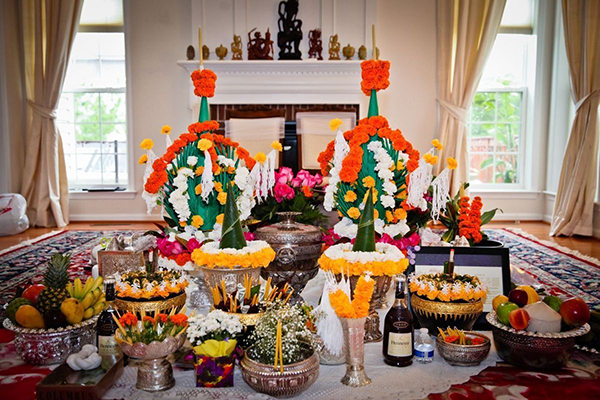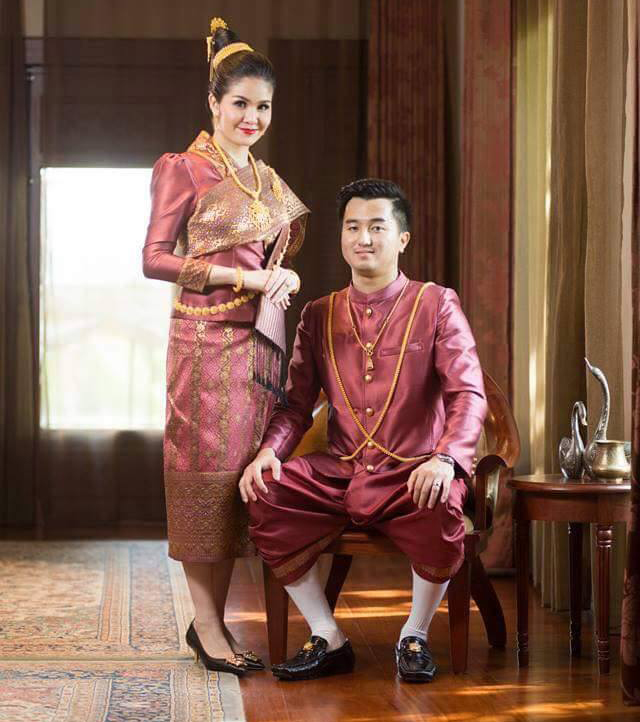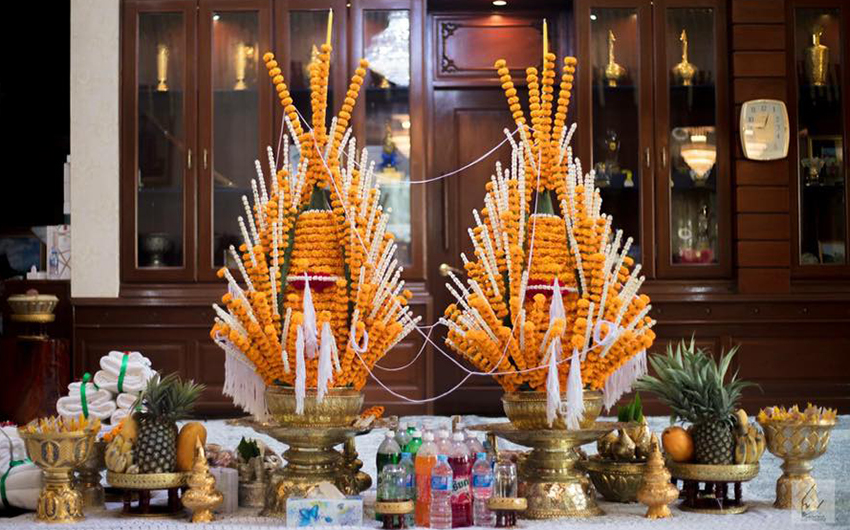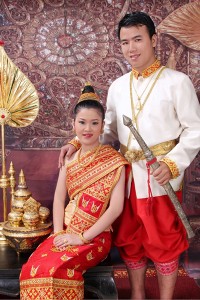Technical Details:
Date of Issue: 19 December 2016
Design: Vongsavanh Damlongsouk
Perforation: 12¾ x 13
Quantity: 10,000 pieces
Quantity: 1,000 (SS Perforation)
Quantity: 1,000 (SS Non-Perforation)
Color: Multi Color
Printing Process: Offset
Printing: Vietnam Stamps Printing
Picture Descriptions:
8000 Lao Kip - Procession To The House Of The Bride Parents
8000 Lao Kip - Wedding Suisses Of The Bride Parents
8000 Lao Kip - Dressing The Bride By The Bride Mother
8000 Lao Kip - Couple After The Wedding
Date of Issue: 19 December 2016
Design: Vongsavanh Damlongsouk
Perforation: 12¾ x 13
Quantity: 10,000 pieces
Quantity: 1,000 (SS Perforation)
Quantity: 1,000 (SS Non-Perforation)
Color: Multi Color
Printing Process: Offset
Printing: Vietnam Stamps Printing
Picture Descriptions:
8000 Lao Kip - Procession To The House Of The Bride Parents
8000 Lao Kip - Wedding Suisses Of The Bride Parents
8000 Lao Kip - Dressing The Bride By The Bride Mother
8000 Lao Kip - Couple After The Wedding
Laos Wedding Ceremony:
The Laos traditional wedding ceremony has been around for generations and very important for younger generations to pass down. A Laos wedding ceremony, or suu khwan, is full of traditions involving the entire village or community. The marriage is taken seriously by Laotians and all parties involved, and it’s considered as a lifelong commitment made by the couple. In the eyes of the Buddhist religion, the marriage is recognized and sacred, but the wedding ceremony need not be conducted in the presence of monks and is usually performed at the bride’s home.
The wedding ceremony takes place can either be in the morning or afternoon. The family members take responsibilities of preparing food for the luncheon reception. The bride, begins her preparations earlier than the groom since her costume is much more intricate. She wears a traditional Laotian wedding outfit consisting of sinh, a Laotian silk shirt, and paa bien, a scarf, both made from raw silk, and decorates her hair in a traditional bun with ornate gold jewelry. The style of the wedding outfit and hair will vary depending on the family’s wealth and the region of Laos they are from. The guests, mainly family and close friends, gather at the bride’s family’s home.
The ceremony commences when the groom, along with his family and friends, leads a procession from his family’s home through the village to the bride’s home. Upon arrival, the groom’s entourage must convince the bride’s family of his worth before he can enter the house and wed his bride. The ceremony continues with more blessings for the bride and groom, as the guests tie the white strings to the bride’s and groom’s wrists. The string-tying, provides an opportunity to share a personal message and blessing with the bride and groom. The ceremony is followed by the lunch reception. At the end of the wedding day, an evening reception, often held at a hall or hotel, features live traditional Laos music, dancing, speeches and delicious Laos food.


Preparing for traditional wedding in Laos
Laos Wedding:
Today, most people split their wedding into two parts, one is a traditional Laos wedding ceremony and the other is a modern wedding reception. Some have the traditional Laos wedding ceremony at home in the morning, when Baci ceremony takes place, and some do it in the afternoon. Only close friends and relatives are invited to join the Baci part. Whether the Baci takes place in the morning or afternoon, food and drinks are served to the guests at the end of the ceremony. The reception is then held in the evening, when more guests are invited, at a hotel, a restaurant, a hall specially caters for weddings or somewhere that could hold more people. This practice is more common among city people.

Lao Bride and Groom in traditional costume
The traditional Laos wedding is usually held at the bride’s family home. In the past the Laos wedding was always in the morning which was believed to be convenient and best time for a joyful celebration such as wedding ceremony to take place, whereas the afternoon is considered the time for sad ceremonies like cremations. However, with modern lifestyles convenience has become more important so the time doesn’t really matter any more.
Generally, 10:00am and 4:00pm are usually considered the best times because guests are invited to have lunch or dinner after the official ceremony is finished.
Bride Price:
The wedding preparations start with the Sou Khor (bride-price negotiation) procession.
The bride-price is usually money and gold, but it can be anything valuable. Traditionally this is asked by the bride's parents as a refund for the breast milk that has been fed to the bride since she was born (literally translated from Lao). How much? depends on the family social status of both sides. Nowadays many parents don't ask for anything so long that their daughter is happy.
When both sides negotiate and agree on the bride-price and all other details then they set the wedding date.
Engagement:
Engagement is not that common in Laos. Some couples get engaged before their wedding while many others don't bother with the engagement at all. There are no set rules really, especially nowadays when life style of many Lao has changed.
The Best Day for Laos Wedding Procession:
Traditionally, the wedding date has to be on a good day in lunar calendar, so parents of either or both sides usually consult elders or senior ex-monks, who have good knowledge of Lao custom and tradition, before the wedding date is set. One thing most Lao knows is that the wedding is not supposed to take place during the three months Khao Phansa (Buddhist Lent, late July - late October).
Today this procession has been slightly changed to suit modern lifestyles and sometimes the couple agrees on most of the details (including the bride-price) and they set the date to suit their busy lives. When it comes close to the wedding day, this Sou Khor procession is organised just for the sake of Lao custom or tradition.
Laos Wedding Preparation:
The night before the Laos wedding takes place, an informal ceremony is held at the bride-to-be’s home, and sometimes the groom holds the same ceremony at his place as well. This is called Oun Dong (literally translated: wedding or marriage warming) and it only involves close friends and relatives who come to help with wedding preparations as well as to eat and drink. The things to prepare include Pha Khuan (handmade marigold pyramid made of banana leaves and flowers), food for the big day and the new couple’s bedroom. In this room tradition demands the bed must be made by the mother of the bride or an older female who has a good family (with a good husband and good children and who is not divorced, or a widow).
The wedding preparations start with the Sou Khor (bride-price negotiation) procession.
The bride-price is usually money and gold, but it can be anything valuable. Traditionally this is asked by the bride's parents as a refund for the breast milk that has been fed to the bride since she was born (literally translated from Lao). How much? depends on the family social status of both sides. Nowadays many parents don't ask for anything so long that their daughter is happy.
When both sides negotiate and agree on the bride-price and all other details then they set the wedding date.
Engagement:
Engagement is not that common in Laos. Some couples get engaged before their wedding while many others don't bother with the engagement at all. There are no set rules really, especially nowadays when life style of many Lao has changed.
The Best Day for Laos Wedding Procession:
Traditionally, the wedding date has to be on a good day in lunar calendar, so parents of either or both sides usually consult elders or senior ex-monks, who have good knowledge of Lao custom and tradition, before the wedding date is set. One thing most Lao knows is that the wedding is not supposed to take place during the three months Khao Phansa (Buddhist Lent, late July - late October).
Today this procession has been slightly changed to suit modern lifestyles and sometimes the couple agrees on most of the details (including the bride-price) and they set the date to suit their busy lives. When it comes close to the wedding day, this Sou Khor procession is organised just for the sake of Lao custom or tradition.
Laos Wedding Preparation:
The night before the Laos wedding takes place, an informal ceremony is held at the bride-to-be’s home, and sometimes the groom holds the same ceremony at his place as well. This is called Oun Dong (literally translated: wedding or marriage warming) and it only involves close friends and relatives who come to help with wedding preparations as well as to eat and drink. The things to prepare include Pha Khuan (handmade marigold pyramid made of banana leaves and flowers), food for the big day and the new couple’s bedroom. In this room tradition demands the bed must be made by the mother of the bride or an older female who has a good family (with a good husband and good children and who is not divorced, or a widow).

Pha Khuan: handmade marigold pyramid made of banana leaves & flowers, surrounded by fruits, drink, cooked sticky rice in baskets, boiled eggs and chicken. All make a set of Pha Khuan
The Big Day:
On the big day, the bride is dressed with a traditional Lao silk Sinh (Lao skirt), and silk blouse, and has her hair tied up in a special way with gold decoration. This ensemble is finished off with a gold necklace, bracelets, earrings and a bell.
The groom also gets dressed up usually with white or cream colored silk shirt and a traditional silk Salong (a pair of baggy pants). Sometimes grooms wear normal pants and suits as some find Salongs uncomfortable.
On the big day, the bride is dressed with a traditional Lao silk Sinh (Lao skirt), and silk blouse, and has her hair tied up in a special way with gold decoration. This ensemble is finished off with a gold necklace, bracelets, earrings and a bell.
The groom also gets dressed up usually with white or cream colored silk shirt and a traditional silk Salong (a pair of baggy pants). Sometimes grooms wear normal pants and suits as some find Salongs uncomfortable.






No comments:
Post a Comment